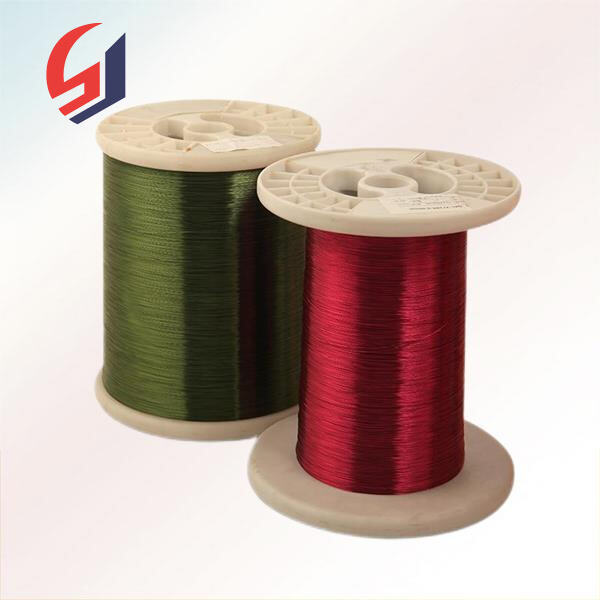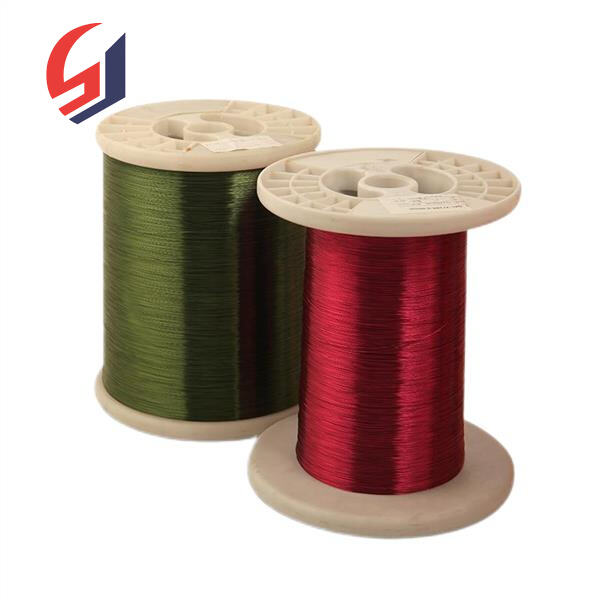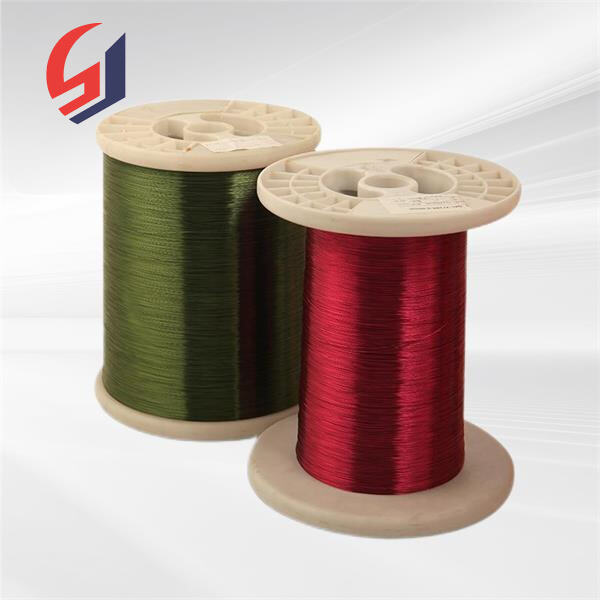Copper: A Metal That Has Long Been Used to Make Electrical Wires It excels at conducting electricity, or allowing electricity to pass easily through it. This makes it a perfect choice for wiring in homes, buildings, and anywhere else that requires electricity. However, the downside of copper is that it's not exactly cheap to purchase. Copper clad aluminum wire is one of the alternatives that some people are seeking, due to this higher cost. In this article we are going to go over the pros and cons of copper clad aluminum wire versus pure copper wire. We will also examine how both materials hold up in various scenarios
Copper clad aluminum wire is made by taking an aluminum core wire and coating it with a layer of copper. A wire that is lighter than pure copper wire is an advantage in certain situations. Less weight could result in easier to use and transport. Cost: The copper clad aluminium wire biggest advantage of copper clad aluminum wire, is its much cheaper than pure copper wire. Its price is considerably lower, making it a go-to option for those who require large quantities of wire but do not want to candle out too much money on it. Electricians and construction workers often require purchasing wire in large quantities, and copper clad aluminum can be a way for them to reduce expenditure.
Despite several advantages, there are also some disadvantages of copper clad aluminum wire. The primary problem with this wire type is that it is not as strong due to its lighter weight, and thus can break easier than pure copper wires. That could mean that it doesn't hold up as well under harsh conditions, and that's probably a concern for some users who take it to environments where it could get more easily broken. Copper clad aluminum wire is also more difficult to work with as it is much softer than pure copper wire. This softness also means that it won’t hold its form when being installed as well. This makes it a bit harder to install and users may have to be a little more careful to ensure it is installed right.
Looking through how each type of wire works, we actually find some key differences. This means that copper wires for example have a good conductivity than copper plated aluminium wires. Conductivity – the ability of a material to conduct electricity. This means that information sending, for example, over pure copper wire, is better when energy is not lost so much during transportation. But in practice, there are many cases when you don't really care about this conductivity difference for short pieces of wire. In many day to day applications, copper clad aluminum wire will perform equally well as pure copper wire. This makes it a great choice for numerous projects.

Despite several advantages, there are also some disadvantages of copper clad aluminum wire. The primary problem with this wire type is that it is not as strong due to its lighter weight, and thus can break easier than pure copper wires. That could mean that it doesn't hold up as well under harsh conditions, and that's probably a concern for some users who take it to environments where it could get more easily broken. Copper clad aluminum wire is also more difficult to work with as it is much softer than pure copper wire. This cca copper clad aluminum softness also means that it won’t hold its form when being installed as well. This makes it a bit harder to install and users may have to be a little more careful to ensure it is installed right.

We must also talk about the environment as well when we are talking about the use of copper and copper clad aluminum wire. This is because copper is a non-renewable resource, meaning that when we have consumed all of the available copper sources, it will not quickly be replaced. So copper, the more we consume, the more it's a finite resource. This becomes a problem since it jeopardises sustainability and, therefore, whether copper will still be available in the future. Copper can also be destructive to the environment because mining it can leave a big footprint. It can result in soil and water pollution, which can damage local ecosystems.

Finally, what about high-power applications — is copper clad aluminum wire the right choice? Pure copper wire is more appropriate for high-power applications, in general. Because it has higher conductivity and greater durability. When a lot of electricity must flow, pure copper wire can perform better and last longer. There are therefore situations where copper clad aluminum wire is only used in low to medium power, because it can only be used in some power high power wiring. As long as the wire is proper sized and the installation is done correctly, then it can still work. This copper clad aluminum conductor adaptability gives copper clad aluminum wire flexibility in certain applications, particularly where the highest power levels are not of concern.
Our enameled wire factory is able of customizing products to meet customers' particular requirements. They also provide complete after-sales service. Diversified specifications: The factory is able to produce enameled wires that meet a broad variety of specifications, which include various wire diameters, enamel thicknesses, temperature ratings, and insulation ratings to fit a variety different applications.
Copper wire manufacturers in enamel are able to produce top-quality products for a lower price due to their capacity to produce large quantities. 1.) Mass production: The manufacturing facility can quickly respond to large orders and ensure prompt delivery. (2) Cost reduction. By optimizing the production process as well as equipment it is in a position to cut down on production, reduce waste, and reduce unit costs and allow customers to be more competitive in their prices.
Quality is the key component of enameled copper wire. The factory undergoes many quality control procedures to ensure the products are up to standards of international quality and meet the customer's expectations. (1) Control of raw material: from high purity copper to the highest quality of insulation varnish, the raw materials are rigorously screened to ensure stable performance. 2.) Monitoring throughout the process. From wire drawing to enameling, each step of production goes through rigorous testing such as electrical performance, insulation voltage withstand, and tensile tests, to ensure quality and safety. (3) Complete certification Quality factories generally are able to obtain ISO 9001 quality management system certification, as well as UL safety certification. SGS certification, to boost customer confidence.
Our wire factories that are enameled ensure efficient delivery of products globally thanks to advanced production technology and strict quality control. Working closely with our logistics partners in the world We are able create customized logistics solutions to meet the specific needs of our customers. Our global delivery network covers major ports, ensuring that products reach their destinations efficiently and securely. Sales staff at our company also offer online tracking solutions that inform our customers of the status of their shipment, improving supply chain transparency.